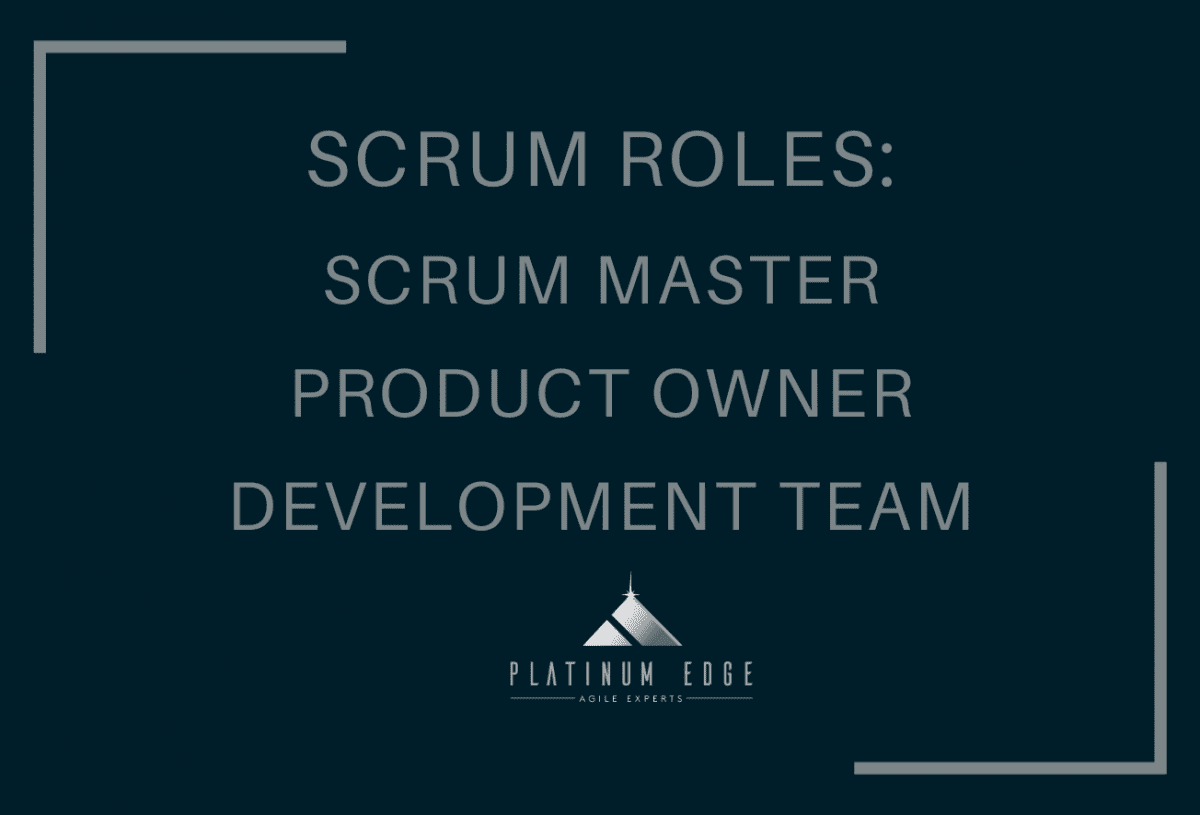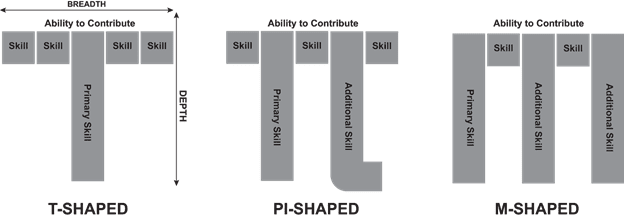Organizations embarking on transformational journeys often change from traditional waterfall project management practices to a more lean, agile, and outcome-based product development approach has many challenges. From a staffing perspective, which is a significant issue, some equate this transition as switching from one sport to another. Both sports need capable, talented people. However, the games, while similar in some ways, are substantially different. Some ask metaphorically, “Can a pitcher become a quarterback in an agile organization?” In other words, can a project manager, business analyst, functional manager, etc. fulfill a new role in an agile organization?
Change creates opportunity
When organizations move toward improved agility, many in traditional roles feel left out, even left behind. The reason is purpose-driven, empowered, self-organizing teams closely connected to customers, and their needs strive to become autonomous. And this is a good thing. Like sports teams, agile organizations also need capable, talented people, regardless of their roles. Change creates opportunity.
In this article, we’ll discuss several opportunities for people with traditional waterfall project skills as well as keys for ensuring their transition success.
First, learn the game
The reason scrum is so popular as an agile framework is due to its simplicity. Scrum consists of three accountabilities or roles, three artifacts, and five events. While simple, many find the initial discipline needed to be effective challenging, and training can help. Introductory and advanced scrum training is available depending on the desired role: Product Owner (CSPO, A-CSPO), Developer (CSD, CSP), Scrum Master (CSM, A-CSM,) and for leadership (Certified Agile Leader – CAL).

Note: Role transitions are never easy. Career aspirations, team fit, personalities, skills, talents, individual strengths, weaknesses, and desires all play a part. One size does not fit all. You hired them for their current role, not for a new one. That’s why upfront collaboration can go a long way. Adopting agile techniques improves employee morale, team performance, and product development success, all benefits of changing the way work is done.
Let’s discuss each legacy or traditional role, how the scrum team fulfills that need, and possible transition opportunities.
The business analyst
The role of a business analyst can transition well to the team. The product owner elicits requirements, works with customers and stakeholders, and gathers product development needs, all traditional business analyst tasks. The developers also collaborate, often contributing their own requirements, such as system improvements and addressing technical debt. Business analyst skills are critical to high-performing scrum teams, but the role is not.
Business analysts in transitioning organizations often find the product owner role to be a natural fit. If the organization is willing to empower the business analyst to make the investment and financial trade-off decisions, the business analyst can succeed as a product owner. Some also find a natural inclination for product testing, ensuring acceptance criteria and customer needs are adequately met. These individuals can learn new skills, such as test automation, UX design, and even development.
If they have a servant leader predisposition with organizational clout, the scrum master role may be a good fit. Leveraging relationships with stakeholders and customers, gained as analysts may be valuable in removing team impediments or helping the team improve.
The project manager
The three roles on the scrum team absorb the project manager position. The product owner takes over the collaboration with customers and stakeholders, budget management, backlog prioritization, and accountability for achieving business outcomes (ROI accountability). The development team performs cross-organization coordination, scheduling, status updates, and change and release management functions. Scrum masters handle impediment removal, mentoring, coaching, and facilitation, as needed by the team.
Some of the project manager’s traits can also be agile anti-patterns if not addressed. “Predict, command, and control” tendencies or sole accountability for defining technical solutions, for example, can impede a scrum team’s ability to follow Principle 11 from the agile manifesto. It says, “The best architectures, requirements, and designs emerge from self-organizing teams.”
Project managers can become product owners when they limit their focus to “what” the customer needs and “when” they need it. A successful product owner leaves “how” the solution is built and “how much” is pulled into the sprint to the development team.
Scrum master may also be a role of interest to them. Particularly if they have a servant leadership mindset, enjoy facilitation and coaching, and can enable the team to self-organize.
The functional manager
Like project managers, functional managers are often responsible for project deliverables, managing the people needed to accomplish project objectives. This functional manager also transitions to the scrum teams that self-organize and self-manage. No longer do the teams need someone telling them what to build or how to build it, especially if the organization strives to create enduring, persistent teams. Accountability rests with those responsible for the work and the outcomes.
Managers, both project and functional, who enjoy developing people may thrive as talent development managers. Instead of influencing only those reporting to them, talent development managers can nurture everyone. For example, instead of a QA functional manager leading five people with quality assurance skills, they become accountable for helping all development team members throughout the organization improve their skills.
Talent development needs become increasingly important. People with multiple skills become more valuable to the team and organization. Some refer to this as moving from being an I-shaped individual (skilled in one area or discipline such as quality assurance) to becoming T-shaped (a depth of skill in one area, but able to contribute in others), then PI-shaped or even M-shaped (multiple areas of deep skill).

Standard development team roles shift from being roles to becoming skills that any team member can possess and develop. Organizations do this by building individual capability with development plans and sharing technical passion across the entire organization. Many talent development managers fulfill HR responsibilities for up to 50 people, helping agile organizations to have fairly flat hierarchies.
Functional managers who enjoy removing team impediments and developing high-performing teams may find fulfillment in the scrum master role. The organizational clout gained by their management experience can be beneficial as they guide stakeholders on interacting with the scrum team or eliminate organizational impediments. Coaching teams and people to higher performance often comes naturally for many functional managers.
The product owner role may also be a good fit if they appreciate building and improving relationships with customers and stakeholders. Likewise, if they desire to be held accountable for ROI and product success, product ownership could be an excellent opportunity.
The executive
Even executives with legacy project delivery accountability struggle in an agile organization for many of the same reasons as other roles. Those that make the transition often rename their CEO title from “Chief Executive Officer” to “Chief Enablement Officer.” They redefine their roles, transitioning from managers to leaders and coaches. They become builders of competent people and teams ready for career advancement and more challenging responsibilities.
They empower product owners to respond to customer needs becoming a servant leader/support function of empowered product owners. They transfer decision-making to the people most familiar with the problem. Some also work with scrum masters to identify and remove impediments. As members of the agile transition team, they lead by example as agile role models. They pay attention to off-trending burndown charts and attend sprint reviews, continually asking, “How can I help?” rather than “What’s wrong with this team?”
A key metric these executives watch is the “manager to creator” ratio. Agile organizations find they need fewer observers and more doers, or rather, more people with the technical skills to build valuable product increments.
Second, give them the support needed, then get out of the way!
Role transitions are tough, so it’s important to give people a sense of belonging, worth, and psychological safety. Co-creating career options for moving forward playing a different game is vital for assisting them with success in their new role.
Gaining clarity about “why” an agile transition is necessary makes doing the difficult “what” and “how” less of a chore. Organizational transformations are not just a renaming of titles or a remapping. It’s a mindset shift, a rethinking, and a restructuring. If you and your team members can come to terms with that, then understanding what to accomplish to become more agile isn’t about fear of losing your role or identity. It’s about everyone seeing an opportunity for expanded identity and skill/mindset growth.
Business strategist Peter Senge said: “You cannot force commitment, what you can do…You nudge a little here, inspire a little there, and provide a role model. Your primary influence is the environment you create.”
Attributes offer more value than technical skills
While technical skills are crucial, the most valuable attributes are working well with a team, having an improvement mindset, and focusing on the customer. Business management expert Patrick Lencioni summarized these attributes in his book “The Ideal Team Player” as humility, hungry, and smarts. Make a team of up to 10 people (scrum team size) with these attributes, trust them, train them, give them the environment and support they need, then get out of the way! You’ll be amazed with the results.
Looking for support for your agile transition?
The agile and scrum experts at Platinum Edge can help with assessments, training, and coaching & mentoring. Contact us today to learn more about how we can help.


